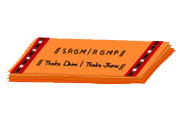Lyrics and Meanings (Devaranama)
Dhévaranāmas (names of the Lord/God) were the Bhakthi compositions that were the outcome of the Bhakthi movement in South India, especially Karnāṭaka during 13th century to 14th century CE, whose main objective was to promote Dvaitha philosophy of Madhvāchārya through literature.view more
Lyrics and Meanings (Devaranama)
Dhévaranāmas (names of the Lord/God) were the Bhakthi compositions that were the outcome of the Bhakthi movement in South India, especially Karnāṭaka during 13th century to 14th century CE, whose main objective was to promote Dvaitha philosophy of Madhvāchārya through literature. The compositions were by Haridhāsas who were saints, philosophers or plain wandering bards and thus, this part or section of literature came to be known as "dhāsa sāhithya" or the literature of the servants of the Lord. Though the compositions were mainly on the concept of Hari bhakthi and are about Hari or Kriṣhṇa, a few composers also composed Dhévaranāmas using social values, morals and virtues as a theme. There are Dhévaranāmas composed on goddesses too. These compositions took an important and prominent place not only in the world of literature, but also in the vast field of art, especially Bharathanātyam.
Śhrī Pādharāja Thīrtha is well-known as the grandfather of Haridhāsas (Haridhāsa Pithāmaha). Śhrī Purandhhara Dhāsa and Śhrī Kanaka Dhāsa were the chief architects.
If we look at the entire Haridhāsa Literature, one can divide into three categories. They are; General compositions, Kāvya or poetic compositions, thatthva or philosophic compositions/literature.
General compositions include all types of compositions which are very special. This can be further divided into the following groups; Kīrthanas, Ūghabhōgas, SūĪādhis, others.
Kīrthanas are the most attractive compositions of Haridhāsas. This is also called Dhévaranāma. Kīrthanas or Dhévaranāmas are melody based on technical compositions like Gītha whose purpose is to elucidate Rāga forms and Thāḷa patterns.
| 1 | Sahisalārene Gōpi | click here |












